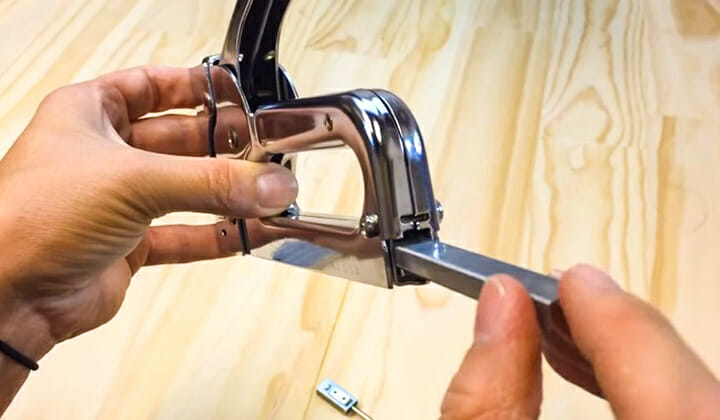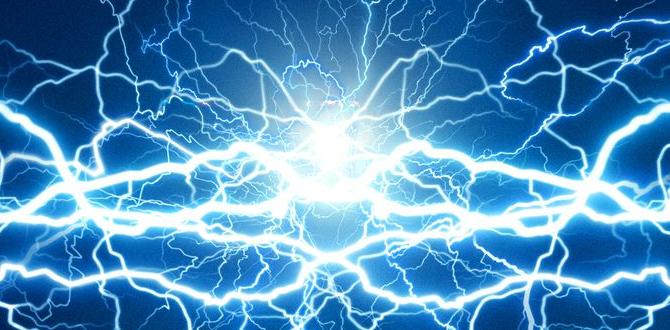Quick Summary: Confidently power your nail gun with an extension cord for DIY success! This guide ensures you select the right cord, connect it safely, and maintain power for efficient nailing. Learn essential tips for hassle-free projects and safe operation.
Hey there, fellow DIYers and woodworkers! Jack Shaffer here from Nailerguy. Ever reached for your trusty nail gun, ready to tackle that fence repair or custom shelving project, only to find your power cord just doesn’t quite reach? It’s a common frustration, but don’t let a limiting cord hold you back. With the right knowledge, using an extension cord with your electric nailer is simple, safe, and incredibly effective. We’ll walk through everything you need to know to get that extra reach and get your projects done smoothly.
Understanding the basics of extension cords and nail guns is key to avoiding common pitfalls. Things like choosing the correct gauge, ensuring proper connections, and staying safe are all part of the process. By the end of this guide, you’ll feel confident powering up your nail gun no matter where your project takes you.
Table of Contents
Why Extension Cords Are Your Nail Gun’s Best Friend
Electric nail guns, also known as pneumatic or air-powered nailers (though we’re focusing on the electric corded type here!), are fantastic tools. They drive nails quickly and consistently, saving you tons of time and effort compared to hammering by hand. However, their power cords are often designed with standard outlet reach in mind, which isn’t always sufficient for larger projects or awkward workspaces.
This is where an extension cord comes in. It’s not just about getting power; it’s about getting the right power to your tool reliably. A good extension cord acts as a bridge, extending the reach of your nail gun safely and effectively. Think of it as giving your nailer the freedom it needs to roam around your project, whether you’re building on-site, working in a detached garage, or even assembling furniture in the middle of a room.
The benefits are clear: more flexibility in your workspace, the ability to tackle bigger jobs without being tethered, and the peace of mind knowing your tool will perform as it should. We’ll dive into how to make this happen without any hiccups.
Choosing the Right Extension Cord: It’s All About the Specs
Not all extension cords are created equal, and using the wrong one can lead to a few problems. You might experience a nail gun that fires weakly, struggles to drive nails fully, or even overheats the cord and tool. That’s why selecting the correct cord is the most crucial first step. Let’s break down what you need to look for.
Gauge (AWG): The Thickness Matters!
The gauge of an extension cord refers to its thickness. A lower AWG number means a thicker wire, which is better for carrying electricity over longer distances without losing significant voltage. For electric nail guns, which can draw a fair amount of power, you’ll want to opt for a thicker gauge cord.
- 16 AWG: Suitable for short runs (up to 50 feet) and lighter loads. Might be okay for very light-duty nailers or short extensions.
- 14 AWG: A good all-around choice for many DIY nail gun applications, especially for runs up to 100 feet. It offers a good balance of thickness and flexibility.
- 12 AWG: Ideal for longer runs (over 100 feet) or if your nail gun is particularly power-hungry. This is the most robust option for demanding tasks.
Always check your nail gun’s manual for its power requirements, but as a general rule, err on the side of a thicker gauge (lower AWG) if you’re unsure. It’s always better to be over-spec’d than under-spec’d.
A good resource for understanding wire gauge and its impact on electrical systems is found on the Engineering Toolbox, although we’ll keep it simple here for our DIY needs. The thicker the wire (smaller AWG number), the less resistance it offers to the electrical current.
Length: Reach Without Resistance
Extension cords come in various lengths. While you might be tempted to grab the longest one available, remember that the longer the cord, the more electrical resistance you introduce. This resistance can cause voltage drop, meaning your nail gun might not receive enough power to operate at its full potential.
Try to choose a cord that’s just long enough for your needs. For most home projects, a 25-foot, 50-foot, or even a 100-foot cord will suffice. If you have an exceptionally large project or an unusual workspace, you might need a longer cord, but always try to keep the length reasonable.
Cord Type and Durability
Consider where you’ll be using your nail gun. If you’re working outdoors, you’ll need a heavy-duty cord rated for outdoor use. These cords are built to withstand moisture, temperature changes, and general wear and tear. Look for the “outdoor use” or “all-weather” rating on the packaging.
Indoors, a standard, heavy-duty cord is usually fine. You want a cord that feels robust, not flimsy. Look for features like reinforced prongs and molded connectors, which are less likely to break with frequent use.
Number of Outlets (If Applicable)
Some extension cords come with multiple outlets, acting like a power strip on a cord. This can be convenient if you need to power other tools or lights nearby. Just be mindful that adding more devices to the cord can increase the total power draw, so ensure your chosen extension cord can handle the combined load.
Connecting Your Nail Gun Safely: Step-by-Step
Now that you’ve got the right extension cord, let’s get it connected and ready to go. Safety is paramount, so always follow these steps carefully.
Step 1: Inspect Everything
Before you plug anything in, take a moment to inspect both your nail gun’s power cord and your extension cord. Look for any signs of damage:
- Frayed or cut insulation
- Cracked or brittle plastic
- Bent or broken prongs
- Any other visible wear and tear
If you find any damage, do not use the cord or the tool. It’s better to replace faulty equipment than to risk an electrical shock or fire hazard. The Occupational Safety and Health Administration (OSHA) emphasizes proper electrical safety, and starting with intact equipment is the first step.
Step 2: Ensure Tools Are Off
Make sure your nail gun is switched OFF and is not accidentally triggered. If your nail gun has a safety lock or trigger disable, engage it. The same goes for the extension cord; ensure any switches on it are in the “off” position.
Step 3: Connect the Extension Cord to the Nail Gun
Plug the male end of your chosen extension cord firmly into the female receptacle on your nail gun’s power cord. Ensure it’s a snug fit. Some users prefer to use a cord connector that locks the two together to prevent accidental disconnection during operation. This can be a really handy accessory for consistent power delivery.
Step 4: Connect the Extension Cord to the Power Source
Now, plug the other end of the extension cord into a suitable electrical outlet. If you’re using a multi-outlet extension cord, plug it into the wall first, then connect your nail gun to one of the outlets on the cord. Again, ensure all connections are secure.
Step 5: Power On and Test
Once everything is connected, you can turn on your nail gun (and any switches on your extension cord, if applicable). It’s a good idea to perform a test fire into a scrap piece of wood to ensure the nail gun is operating at full power and driving nails correctly.
Step 6: Manage Your Cord
As you work, be mindful of where your extension cord is. Keep it out of the path of your work, away from any cutting tools, and where you won’t trip over it. Coil it neatly when you’re finished.
Proper Cord Management and Safety Tips
Using an extension cord with your nail gun adds a new element to your workflow, and with that comes a few extra safety considerations. It’s not complicated, but a little attention goes a long way in preventing accidents.
Keep it Tidy
A coiled or tangled cord is a tripping hazard and can also lead to premature wear and tear on the cord itself. When you’re not actively using the extension cord, coil it neatly. When in use, try to route it away from your immediate work area and foot traffic. Consider using cord clips or ties to keep it organized as you move around your project.
Avoid Overloading
We touched on this with gauge and length, but it’s worth repeating: don’t overload your extension cord. If you’re running multiple tools, ensure the combined amperage draw doesn’t exceed the cord’s rating or the circuit breaker’s capacity. Check the label on your extension cord for its amperage rating.
Outdoor Use Precautions
If you’re working outside, always use an extension cord specifically rated for outdoor use. These cords are designed to resist moisture and temperature fluctuations. Additionally, ensure the outlet you’re plugging into is a Ground Fault Circuit Interrupter (GFCI) outlet. GFCI outlets are designed to shut off electricity quickly if they detect a fault, which can prevent serious shocks in damp environments.
According to the U.S. Consumer Product Safety Commission (CPSC), GFCI protection is crucial for reducing electrical shock hazards.
Never Use Indoors for Outdoor Cords (and Vice Versa)
Outdoor-rated cords are built tougher and may use different insulation. While seemingly more robust, they might not be ideal for indoor use due to potential overheating if not designed for continuous indoor load. Conversely, indoor cords lack the protection needed for outdoor conditions and can deteriorate quickly, becoming a safety risk.
Protect Against Damage
Keep your cords away from sharp edges, heavy machinery, and heat sources. If running a cord across a doorway or high-traffic area, consider a cord protector or ramp to shield it from damage and prevent tripping.
Disconnect When Done
When you’re finished with your project or taking a break, unplug the extension cord from the power source. This is a simple safety measure that prevents accidental power-ups and reduces wear on the connections.
Electric Nail Gun vs. Cordless vs. Pneumatic: What’s the Extension Cord’s Role?
It’s helpful to understand how your electric nail gun with an extension cord fits into the broader nail gun landscape. Each type has its pros and cons, and understanding them can help you appreciate the role of your corded setup.
| Nail Gun Type | Power Source | Pros | Cons | Extension Cord Need? |
|---|---|---|---|---|
| Electric (Corded) | Wall outlet via power cord | Consistent power with no battery drain, often lighter than cordless, generally lower initial cost. | Limited by power cord length, requires accessible outlet. | Yes, frequently. |
| Cordless (Battery) | Rechargeable battery | Ultimate portability, no cords or air hoses, works anywhere. | Battery life limitations, can be heavier, battery recharge time, often higher initial cost. | No. |
| Pneumatic (Air) | Air compressor via air hose | Most powerful nail drives, lightest tool weight, versatile for many tasks. | Requires air compressor, air hose can be cumbersome, compressor is noisy and needs power. | No, but the compressor needs power, often via an extension cord. |
As you can see, while cordless options offer ultimate freedom, electric nail guns are a fantastic middle ground. They provide reliable power without the battery management headaches of cordless tools, and without the bulky compressor needed for pneumatic tools. The extension cord is simply the enabler that lets you fully utilize the advantages of an electric nail gun. It allows you to enjoy the consistent power and often lighter weight of an electric nailer, while still maintaining significant project mobility.
Troubleshooting Common Extension Cord Issues with Nail Guns
Even with the right cord and careful setup, you might run into a few snags. Here’s how to troubleshoot the most common problems:
Nail Gun Fires Weakly or Not at All
- Cause: Voltage Drop. This is the most common culprit, especially with longer or thinner (higher AWG) extension cords. There’s also a chance of a loose connection somewhere.
- Solution:
- Ensure you’re using the correct gauge (lower AWG) and length for your nail gun.
- Check that the extension cord is connected securely to both the nail gun and the power outlet.
- Try a shorter extension cord to see if the power improves.
- Test the nail gun in another outlet with just its own cord (if possible) to isolate the issue to the extension cord.
- Make sure the nail gun’s battery (if it has one for electronics) is charged or the main power switch is in the “on” position.
Extension Cord Feels Hot to the Touch
- Cause: Overloading or using an undersized cord (too high AWG or too long).
- Solution:
- Unplug immediately and let the cord cool down.
- Ensure the total amperage draw of all connected devices does not exceed the cord’s rating.
- Use a thicker gauge (lower AWG) extension cord.
- Use a shorter extension cord.
Nail Gun Cycles Intermittently
This can sometimes be a sign of a poor connection or a power supply issue.
- Solution:
- Double-check all plug and receptacle connections. Ensure they are clean and firmly seated.
- Try a different outlet.
- Inspect the extension cord for any damage that might be causing an intermittent break in the circuit.
GFCI Outlet Trips
- Cause: This is a safety feature designed to interrupt power if it detects a problem, often a ground fault. It could be an issue with the nail gun, the extension cord, or even the outlet itself.
- Solution:
- First, reset the GFCI outlet. If it trips again immediately, there’s likely a fault.
- Try plugging in a different, known-good device into the same outlet to rule out the outlet itself.
- Unplug the nail gun and extension cord. Inspect both for damage.
- If you have another extension cord, try using that.
- If the nail gun’s own cord trips the GFCI, the nail gun might be faulty.
- If a good extension cord and a good nail gun still trip the GFCI, the problem might be with the outlet or the circuit. Consult an electrician if you suspect an electrical system issue.
Frequently Asked Questions (FAQ)
Q1: Can I use any extension cord with my electric nail gun?
A1: No, it’s best to use a heavy-duty extension cord with the correct gauge (lower AWG number, like 14 or 12) and length suitable for your nail gun’s power draw. Using an undersized or too-long cord can lead to weak performance and damage.
Q2: What is the best gauge extension cord for a nail gun?
A2: For most common DIY nail gun use up to 100 feet, a 14 AWG cord is a good choice. If you’re running much longer distances or have a high-power nail gun, consider a 12 AWG cord. Always check your tool’s manual for specific recommendations.
Q3: Can I use an extension cord outdoors with my electric nail gun?
A3: Yes, but only if the extension cord is specifically rated for outdoor use. These cords are built to withstand weather conditions. Also, always plug into a GFCI-protected outlet when working outdoors.
Q4: What happens if I use an extension cord that is too long or too thin?
A4: You’ll likely experience significant voltage drop. This means your nail gun won’t receive enough power, leading to weaker nail drives, inconsistent firing, and the tool potentially overheating. In severe cases, it could even damage the nail gun’s motor.
Q5: Is it safe to connect two extension cords together to get more length?
<p


